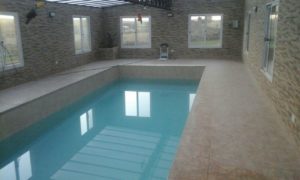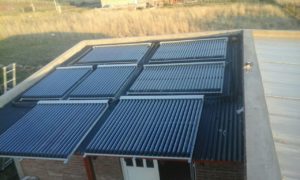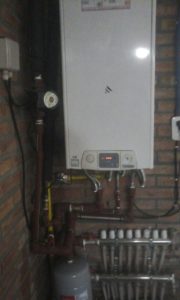Since Soviet Union demise and US blockade intensification, Cuba has made great efforts to get its energy supply.
Its plans included solar energy, mainly in inaccessible areas where the national electricity system (medical clinics, rural hospitals, social clubs, TV rooms and schools) fails.
In medical clinics 400 W power equipments were installed to provide energy to 1 fridge 12 lamps of 15 W, 1 television and 1 radio to communicate with other clinics and hospitals.
In schools solar equipment was installed to provide lighting systems, TVs and computers.
The government built TV rooms, that were equipped with solar systems, in villages that have no electricity. Each TV room has 1 solar module, 1 TV, 1 video and 30 or 50 seats according to population density. The investment was around U$D 4.500 per TV room.
The first large-scale photovoltaic energy facility has installed more than 14.100 modules domestically manufactured. The plant is located in Cienfuegos province. The park, which was build in 2012, connected 2.6 MW to the national grid.

There are also installed photovoltaic plants connected to the grid in Guantanamo, Santiago de Cuba and Santa Clara provinces. The last one can produce electric energy to daily supply about 750 homes at full capacity and can contribute to the national grid with about 962 kW.
The photovoltaic solar park of Pinar del Rio has connected its first MW of the 3 provided, to the national electricity system. This facility, located in the area of Cayo Cana, provide energy to some Wells that supply water to provincial capital and 8,000 people.
Today are already active over 15 photovoltaic plants, in which each MW installed, on average, can produce 1,5 GW/h per year; saving the country annually 430 tons of fuel.
This leap to large-scale plants shows government interest to increase solar energy use and the opportunity to exploit an abundant resource, since the solar radiation average in Cuba is greater than 1,800 kW/h /m2 per year.
In addition, modules are manufactured in a factory located in Pinar del Río province. The local industry has substantial production line technological improvements, which in 2015 reached 60,000 modules focusing on 250 W panels.

Another sign of solar energy interest is the dean Solar Energy Chair, which founded on September 6 2001, at the University of Havana, reaffirms the renewable energy use momentum in Cuba where photovoltaics plays an important role.
Solar business in Latam with Sopelia










